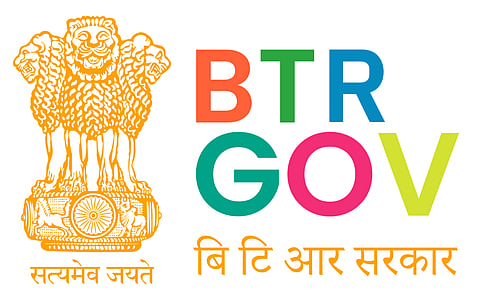
- Home
- Live Blog
- Breaking News
- Top Headlines
- Cities
- NE News
- Sentinel Media
- Sports
- Education
- Jobs

Arpon Bhattacharjee
&
Nitiraj Saharia
Aamteka from Borobazar Chirang, an otherwise non descript VCDC [1] on the map of Bodoland, is going through transformative changes. Changes would pave the way for other villages to emulate and government and non-government agencies and professionals to draw learning from this new paradigm of socio-economic development.
The changing times, marked by ever-growing technological and economical advancements, mean the aspirations among the villagers are rising too, especially among youths. Creating self-employment opportunities thus has become both a priority and an urgency, which the current BTR Government under the energetic leadership of Pramod Boro is demonstrating, adding value and impetus to the broader imperative of Amrit Kaal in the country. Facilitated by Development fellows, a bunch of skilled professionals engaged by the government under techno-strategic support from its partner TRI, the SHG women of the village were sensitised to first come together and map their individual and collective growth aspirations and plan accordingly. Emanating from the democratic values of our nation and the very nature of traditional village governance, “participation” in planning, execution, and monitoring is embedded in the ethos of our rural culture, which rightly informs rural development programs and policies in India. This is more so in the BTR region, rooted in tribal collective values. However, at an administrative operational level, ensuring participation and voice as well as getting the aspirations met has always been an intractable policy challenge. This has been addressed, albeit at a basic level as of now, through the processes of planning: Village Prosperity Resilience Planning (VPRP) and, more importantly, implementation of plans. At first there was an understandable aversion to such an exercise for good reasons, one that involves meetings and individual surveys with the community, especially women. The simple reason is that while planning such as VPRP and GPDP is carried out each year (often ritualistically!), the actual realisation on the ground has remained low. A natural consequence of this is diminished trust and morale of communities towards such processes. This has been addressed to a great extent.
The BTR Government, with the P&RD Department as nodal, has designed the programme called Lakhpati Abo, designed in congruence with the central government initiative “Lakhpati Didi” to support the Abos, or women, and their households to grow economically and, in the process, to enhance their social and political agency as well. Through the design of Lakhpati Abo, the BTR government is sending out a message of its strong commitment to its rural women and their households, to support them in transitioning from “languishing” to “vibrant” and “flourishing,” a process already underway with progressive policies and governance. The programme would pull resources from different departments under a convergence framework, already exploiting the provisions under sub-programs under the P&RD department, such as MGNREGA and DAY-NRLM, to meet the support demanded by the women. For instance, more than 12,000 category B works are approved and construction is underway, aiming to create durable individual livelihood-supporting assets mostly pertaining to smallholder livestock farming. Amteka is an epitome of such efforts, with more than 100 livestock shelters for 50 SHG women for rearing goats, pigs, and poultry being constructed, and with continued state support through MGNREGA, DAY-NRLM, and departmental convergence to facilitate access to resources, working capital, and markets. VCDCs like Amteka will see a significant surge in farmers transitioning to scientific farming of livestock and agriculture in general. This is creating self-employment opportunities in the region’s flourishing agriculture-based nano- and micro-enterprises—driven not only by progressive policies and programmes, but more importantly, by an unwavering commitment to grounding these policies in local realities. The development fellowship team is playing a critical role in plugging the gaps in the entire lifecycle of the programme from designing and strategising to implementation. The design of the programs, such as Lakhpati Abo, with the convergence of other initiatives such as the Bodofa Livelihood Mission, the women FPCs programme and departmental programs, is such that production of all products in an agricultural value chain (including livestock) is encouraged locally/regionally. For instance, the local women FPCs are gearing up to meet the livestock feed and fodder demands in the region, for which the farmers are overly dependent on the pricey products from the markets supplied by big market players.
Extrapolate the case of Amteka to the whole of Bodoland, and we will see a positive upsurge in the effective programmatic support to the rural communities, especially to the womenfolk, to enhance their agricultural productivity and farm-gate price realisation of their produce. Thanks to the visionary leadership and effective governance, Bodoland is poised to see an explosion in the local agricultural production and a changing farm and non-farm enterprise landscape in the near future.